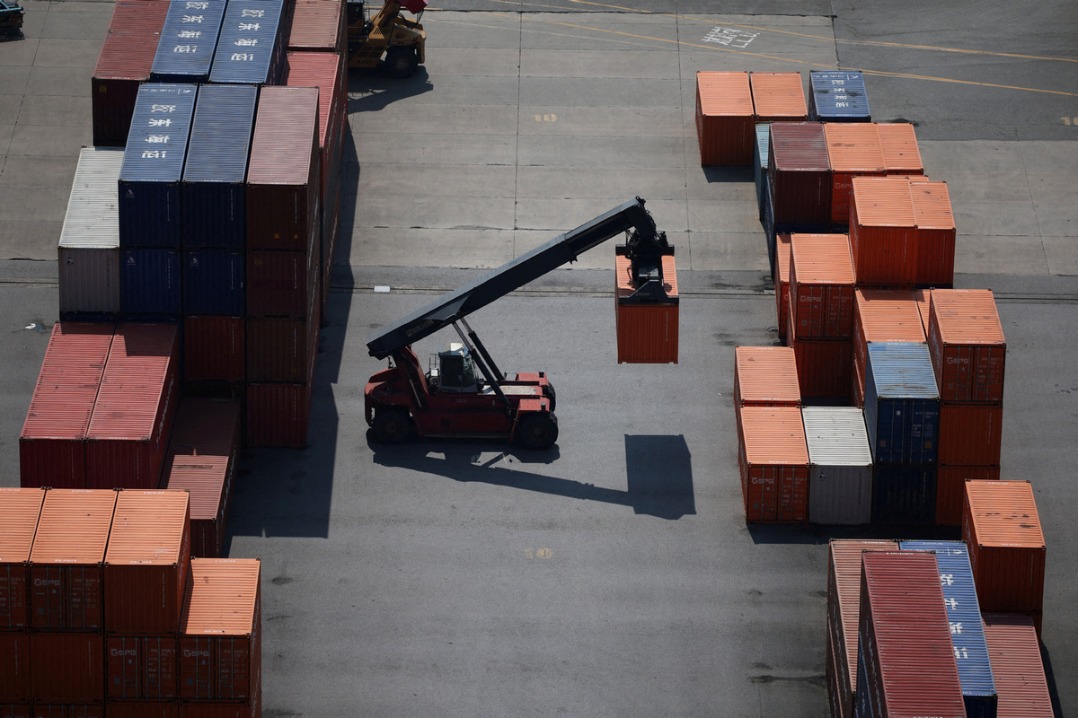Advancing China-Europe green cooperation for a sustainable future


This year marks the 10th anniversary of the Paris Agreement and the fifth year since China announced its carbon peaking and carbon neutrality goals. As signatories to the Paris Agreement, China and the European Union have consistently committed to emissions reduction and are key players in the global fight against climate change. Today, addressing climate change is a consensus not only between China and the EU but also across the international community. Promoting green transformation and energy transition is the only path forward.
Over the years, China has steadily advanced its green transformation by laying out comprehensive strategies across policy, technology, industry, and consumption. China has become an indispensable force in the global shift toward sustainability. In particular, under the intense waves of global technological revolution and competition, China's new energy sector has flourished, demonstrating genuine capabilities. China has emerged as a major global manufacturer of wind power, photovoltaics, and new energy vehicles, with products exported around the world. As China's industrial technology evolves, Chinese enterprises are increasingly expanding overseas. Electric vehicles and battery industries have become new hot spots for Chinese investment in Europe, further strengthening cooperation and injecting powerful momentum into Sino-European green and low-carbon collaboration.
Thanks to favorable geographic locations and friendly foreign investment policies, Central and Eastern European (CEE) countries like Hungary and Slovakia have become testing grounds and strategic footholds for Chinese new energy companies entering Europe. The cooperation models between China and these countries have evolved from simple trade to encompassing research and development, industrial investment, and standards-setting. This has significantly boosted bilateral cooperation in electric vehicles, photovoltaics and energy storage.
In recent years, China's leading new energy companies — CATL, BYD, and EVE Energy — have invested in Hungary, with total investments reaching €17 billion ($19.89 billion). CATL alone plans to invest €7.34 billion ($8.59 billion) to build a factory in Hungary, which is expected to become the largest power battery plant in Europe, supplying major automakers such as BMW, Mercedes-Benz, and Volkswagen. The projects of CATL, FiberHome, EVE Energy, and Huayou Cobalt in Hungary span from battery production and components manufacturing to complete vehicle assembly, forming a comprehensive electric vehicle industry cluster. This not only enhances Hungary's electric vehicle supply chain but also strengthens its position within the European industrial network and supports its economic development and industrial transformation. Hungarian Foreign Minister Peter Szijjarto said that thanks to deep participation by Chinese EV companies, Hungary is set to become the world's second-largest producer of electric vehicles.
Cooperation between China and Slovakia in the new energy sector also exemplifies Sino-European green development. By leveraging complementary strengths in clean energy technology, industry, and markets, the two countries have achieved fruitful cooperation in photovoltaics and electric vehicles. In 2024, during Slovak Prime Minister Robert Fico's visit to China, the two sides signed a joint statement on a strategic partnership, emphasizing strong cooperation in new materials, new infrastructure, clean energy, and sustainable development. China's Gotion High-Tech has signed an investment agreement with Slovakia's Ministry of Economy to build a €1.23 billion ($1.44 billion) EV battery factory — set to become the second-largest investment project in Slovakia's history. The project is expected to attract a series of upstream and downstream EV-related manufacturers to Slovakia. Additionally, Volvo, owned by China's Geely Group, has established its third European manufacturing plant in Slovakia, which will localize the mass production of pure electric vehicles.
Beyond economic benefits, Chinese investment in new energy also improves livelihoods in host countries, creating jobs, raising incomes, and upgrading energy infrastructure. In Hungary, CATL, BYD, Nio, and other companies have already created over 30,000 jobs in the local new energy sector, and this number is expected to grow. These Chinese companies bring advanced EV technologies, manufacturing expertise, and management practices to local firms, enhancing their productivity and operational standards. Through technical training and university-industry collaboration, they also help cultivate local talent in green technologies, laying a solid foundation for long-term industrial upgrading in CEE countries.
Sino-CEE cooperation in new energy arises from shared development needs and thrives on complementary industrial strengths. These vivid examples demonstrate that green cooperation with China not only accelerates energy transitions in Central and Eastern Europe but also fosters a mutually beneficial model linking Chinese technology with the European market. Together, they have built a solid bridge for Sino-European green development.
In December 2019, the EU launched the European Green Deal to make Europe the first "climate-neutral" continent through systemic policy frameworks. This strategy serves as both a roadmap for Europe's green transition and a global benchmark for sustainable development. With the increasing alignment between the EU Green Deal and China's carbon targets, the potential for cooperation in renewable energy innovation, carbon markets, and green infrastructure is being rapidly unlocked, ushering Sino-European green cooperation into a new phase.
At this pivotal moment in human civilization, green development cooperation between China and Europe is not only about the transformation of two major economies — it carries the global mission of tackling climate change. From the Alps to the Yangtze River Delta, countless stories of sustainable progress are unfolding. These stories demonstrate that when Eastern wisdom meets Western experience, and Chinese speed combines with European quality, there could be a transformative force for the world.
Looking ahead, there is every reason to believe that China and Europe will continue to join hands to build a cleaner, more beautiful planet through green cooperation and leave a sustainable and valuable legacy for future generations.

































